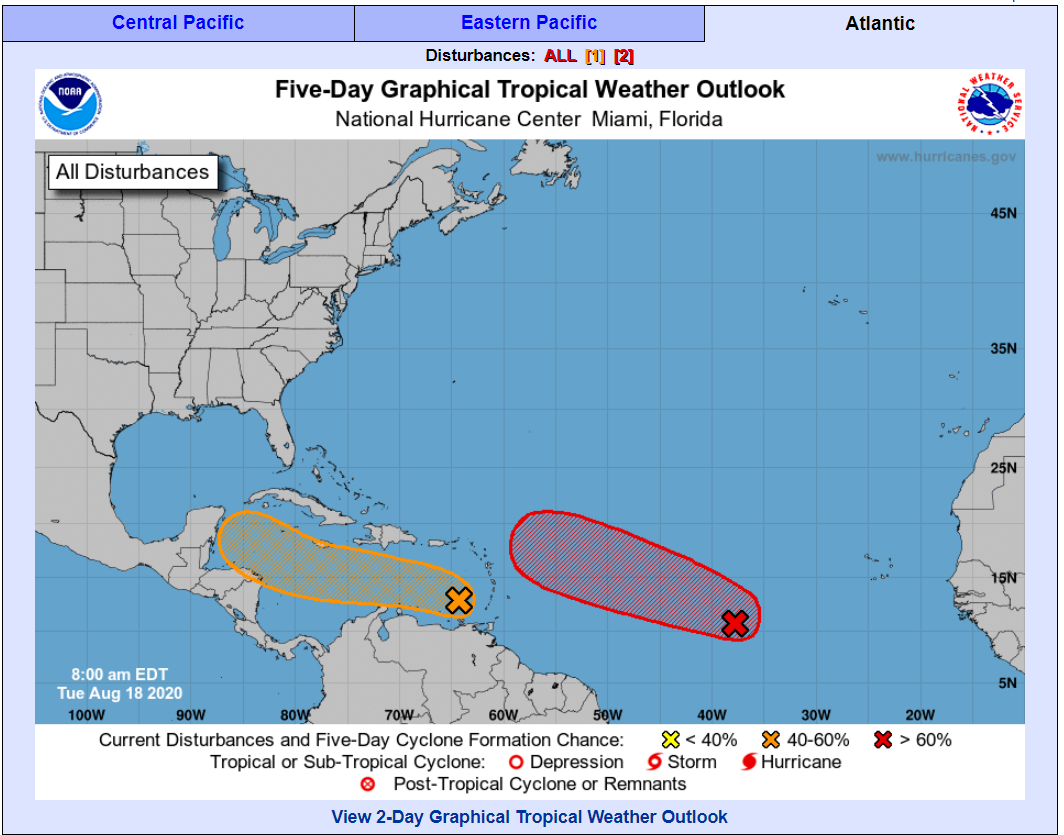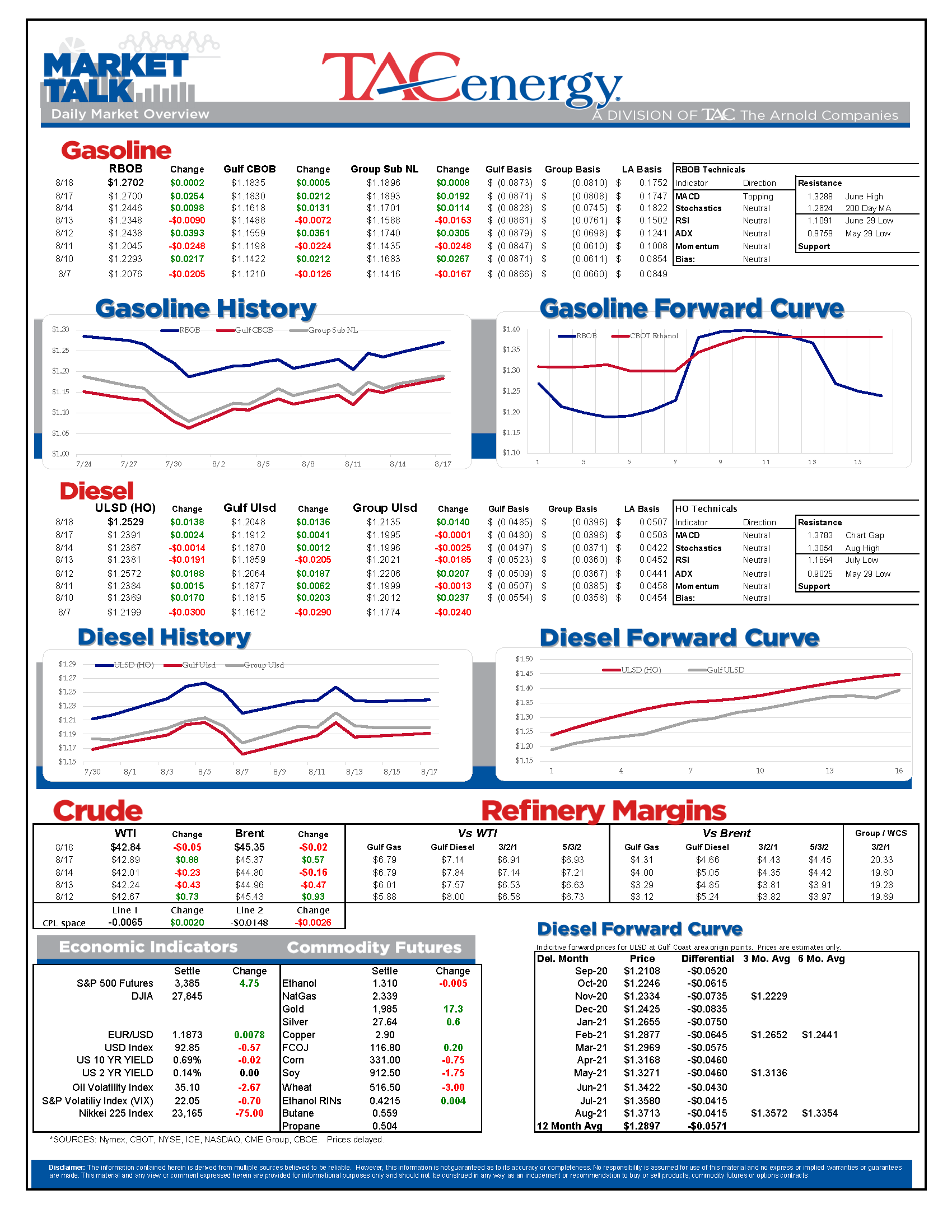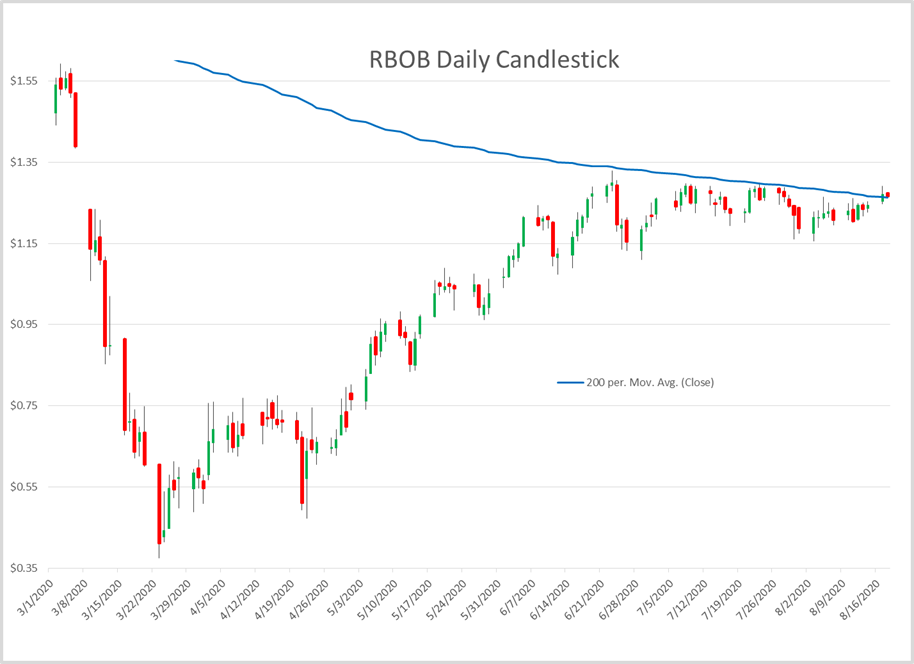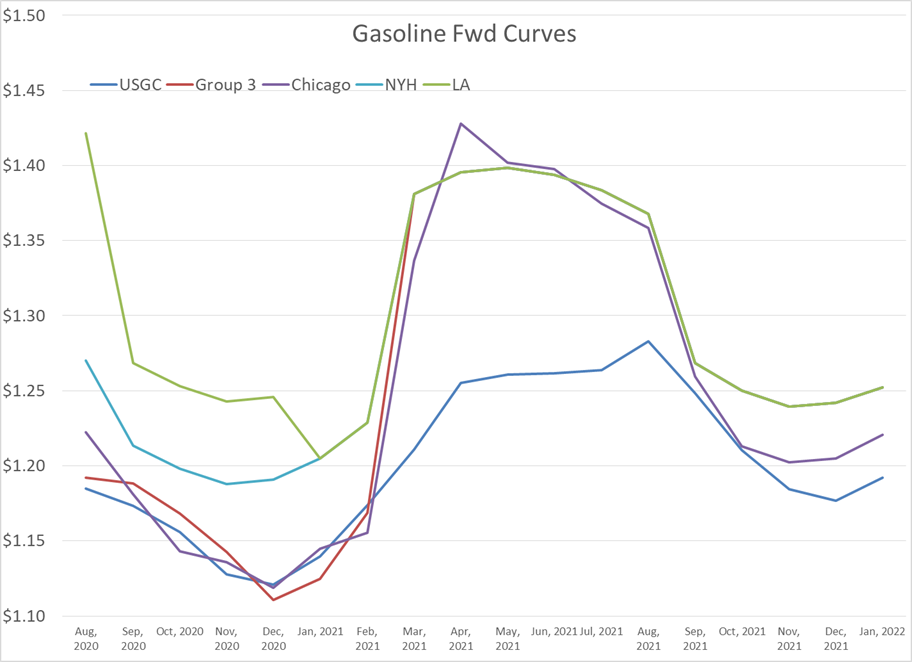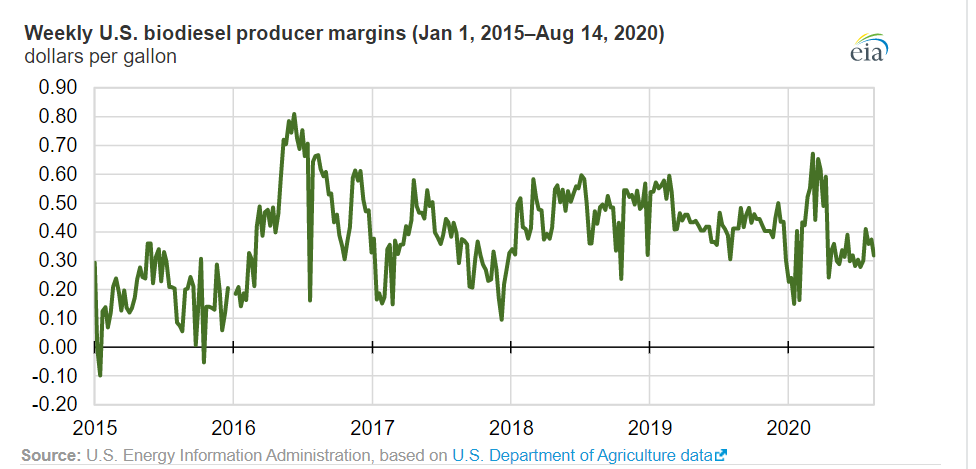Energy Prices Struggle For Direction

Energy prices continue to struggle for direction this week, with crude prices down slightly, diesel up slightly and gasoline flat, leaving the complex stuck in its sideways summer trading range. Tomorrow OPEC & Friends are holding a meeting to discuss output quotas, which could be the catalyst to break prices out of their range. So far, there are no indications that a shift in policy has been made.
Even the shutdown of the country’s largest gasoline pipeline wasn’t enough to push RBOB futures through upside resistance at the 200 day moving average, and there are less than two weeks remaining of the summer grade futures contract trading in the prompt position, which is making gasoline prices look vulnerable to a big move lower if they can’t figure out a way to rally this week.
It’s a similar story for crude futures. Yes, WTI settled at its highest closing value in five months yesterday, but it has not threatened its intraday highs from earlier in the spring, and has sold off each time it’s traded near these levels. With Brent and refined products still entrenched in their sideways ranges, WTI is also looking like it’s in “rally or else” range.
Colonial’s main gasoline line remains shut, with repairs underway to fix a leak that spilled an estimated 63,000 gallons (1,500 barrels) in North Carolina. The pipeline also announced it was shifting operations to allow some gasoline to continue flowing via its main distillate line. Based on the muted market reaction, and the relatively small amount of fuel leaked, it appears that this issue will be solved in the next few days. There have been some allocation restrictions put in place in nearby terminals as a result of the reduced shipments, but so far nothing anywhere close to the widespread outages that we saw in 2016 when the pipeline had a similar shutdown following a leak.
The exception to the going nowhere rule is West Coast gasoline prices that reached their highest levels since March yesterday, thanks to a pair of unplanned refinery issues on top of the numerous economic run rate reductions.
The EIA this morning reported that bio-diesel production and margins have seen less of an impact from COVID demand destruction in 2020 than other fuels. The relative lack of impact is thanks to less blend percentage restrictions than ethanol and the various incentives in place to encourage blending. The report doesn’t mention that those incentives actually helped bio-diesel prices transact for negative values for an extended period this spring when ULSD futures were below $1. It does, however, warn that bio-diesel production will be challenged by growing imports of renewable diesel.
Just in time for no one to want to use it, the White House is enabling oil drilling in the Arctic National Wildlife Refuge. That would have been useful in 2008, not so much in 2020.
The national hurricane center is giving high probabilities for two new tropical storm systems to form in the Atlantic this week. The paths are unclear this far out, but either one still has the potential to be a threat to the U.S. next week.
Click here to download a PDF of today's TACenergy Market Talk.
Latest Posts
Week 16 - US DOE Inventory Recap
Energy Markets Trading Quietly In The Red As Ethanol Prices Rally To Five-Month High
The Struggle For Renewable Producers Continues As A Rapid Influx Of Supply And Crashing Credit Prices Make Biodiesel
After Years Of Backwardation, Diesel Prices Have Slipped Into Contango Over The Past Week
Social Media
News & Views
View All
Week 16 - US DOE Inventory Recap

Energy Markets Trading Quietly In The Red As Ethanol Prices Rally To Five-Month High
Energy markets are trading quietly in the red to start Wednesday’s session after a healthy bounce Tuesday afternoon suggested the Israel-Iran-linked liquidation had finally run its course.
There are reports of more Ukrainian strikes on Russian energy assets overnight, but the sources are sketchy so far, and the market doesn’t seem to be reacting as if this is legitimate news.
Ethanol prices have rallied to a 5-month high this week as corn and other grain prices have rallied after the latest crop progress update highlighted risks to farmers this year, lower grain export expectations from Ukraine, and the approval of E15 blends this summer despite the fact it pollutes more. The rally in grain and renewables prices has also helped RIN values find a bid after it looked like they were about to test their 4-year lows last week.
The API reported small changes in refined product inventories last week, with gasoline stocks down about 600,000, while distillates were up 724,000. Crude oil inventories increased by 3.2 million barrels according to the industry-group estimates. The DOE’s weekly report is due out at its normal time this morning.
Total reported another upset at its Port Arthur refinery that’s been a frequent flier on the TCEQ alerts since the January deep freeze knocked it offline and damaged multiple operating units. This latest upset seems minor as the un-named unit impacted was returned to normal operations in under an hour. Gulf Coast basis markets have shrugged off most reports of refinery upsets this year as the region remains well supplied, and it’s unlikely we’ll see any impact from this news.
California conversely reacted in a big way to reports of an upset at Chevron’s El Segundo refinery outside of LA, with CARBOB basis values jumping by more than a dime. Energy News Today continued to show its value by reporting the upset before the flaring notice was even reported to area regulators, proving once again it’s ahead of the curve on refinery-related events. Another industry news outlet meanwhile struggled just to remember where the country’s largest diesel seller is located.
Click here to download a PDF of today's TACenergy Market Talk

The Struggle For Renewable Producers Continues As A Rapid Influx Of Supply And Crashing Credit Prices Make Biodiesel
The sigh of relief selloff continues in energy markets Tuesday morning, with gasoline prices now down more than 20 cents in 7 sessions, while diesel prices have dropped 26 cents in the past 12. Crude oil prices are within a few pennies of reaching a 1 month low as a lack of headlines from the world’s hot spots allows some reflection into the state of the world’s spare capacity for both oil and refined products.
Gasoline prices are trading near a 6-week low this morning, but still need to fall about another nickel in order to break the weekly trendline that pushed prices steadily higher since December. If that trend breaks, it will be safer to say that we saw the end of the spring gasoline rally on April 12th for the 2nd year in a row. Last year RBOB futures peaked on April 12 at $2.8943 and bottomed out on May 4th at $2.2500. The high (at this point) for this year was set on April 12th at $2.8516, and the low overnight was $2.6454.
It’s not just energy commodities that are seeing an unwind of the “flight to safety” trade: Gold prices had their biggest selloff in 2 years Monday and continue to point lower today. Just how much money poured into commodities in the weeks leading up to the direct confrontation between Israel and Iran is unclear, but we have seen in year’s past that these unwind-events can create a snowball effect as traders can be forced to sell to cover their margin calls.
Supply > Demand: The EIA this morning highlighted the record setting demand for natural gas in the US last year, which was not nearly enough to offset the glut of supply that forced prices to a record low in February. A shortage of natural gas in Europe was a key driver of the chaotic markets that smashed just about every record in 2022, and an excess of natural gas supply in Europe and the US this year is acting as a buffer, particularly on diesel prices.
The struggle for renewable producers continues as a rapid influx of supply and crashing credit prices make Biodiesel, RD and SAF unprofitable for many. In addition to the plant closures announced in the past 6 months, Vertex Energy reported Monday it’s operating its Renewable Diesel facility in Mobile AL at just 50% of capacity in Q1. The truly scary part for many is that the $1/gallon Blender's tax credit ends this year and is being replaced by the “Clean” Fuel production credit that forces producers to prove their emissions reductions in order to qualify for an increased subsidy. It’s impossible to say at this point how much the net reduction will be for domestic producers, but importers will get nothing, and at current CI values, many biodiesel producers may see their “blend credit” cut by more than half.
Click here to download a PDF of today's TACenergy Market Talk.
